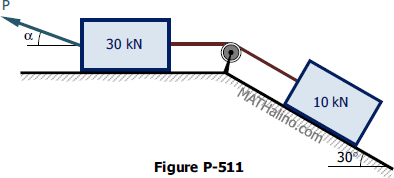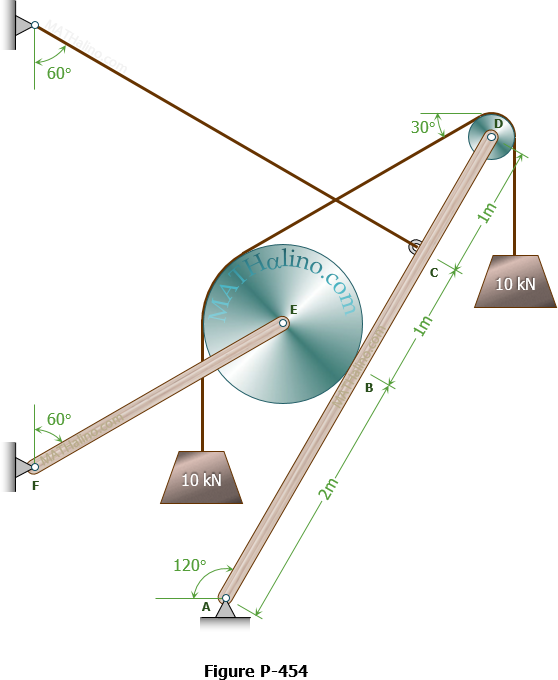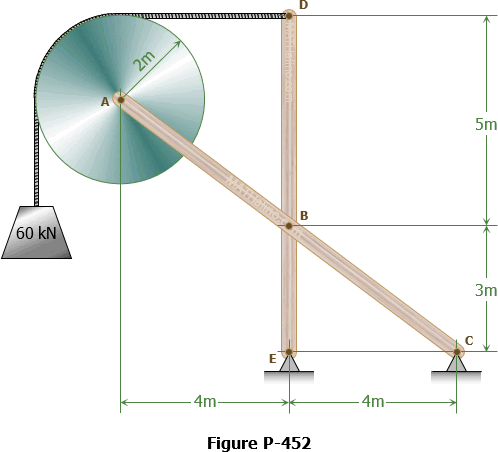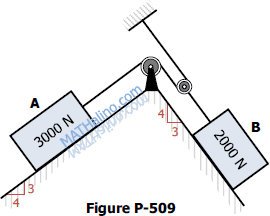frictionless pulley
Problem 511 | Friction
Problem 511
Find the least value of P required to cause the system of blocks shown in Fig. P-511 to have impending motion to the left. The coefficient of friction under each block is 0.20.

- Read more about Problem 511 | Friction
- Log in to post comments
Problem 510 | Friction
Problem 510
What weight W is necessary to start the system of blocks shown in Fig. P-510 moving to the right? The coefficient of friction is 0.10 and the pulleys are assumed to be frictionless.

- Read more about Problem 510 | Friction
- Log in to post comments
Problem 509 | Friction
Problem 509
The blocks shown in Fig. P-509 are connected by flexible, inextensible cords passing over frictionless pulleys. At A the coefficients of friction are μs = 0.30 and μk = 0.20 while at B they are μs = 0.40 and μk = 0.30. Compute the magnitude and direction of the friction force acting on each block.
- Read more about Problem 509 | Friction
- Log in to post comments
Problem 340 - 341 | Equilibrium of Parallel Force System
Problem 340
For the system of pulleys shown in Fig. P-340, determine the ratio of W to P to maintain equilibrium. Neglect axle friction and the weights of the pulleys.

Problem 319 | Equilibrium of Concurrent Force System
Problem 319
Cords are loop around a small spacer separating two cylinders each weighing 400 lb and pass, as shown in Fig. P-319 over a frictionless pulleys to weights of 200 lb and 400 lb . Determine the angle θ and the normal pressure N between the cylinders and the smooth horizontal surface.





